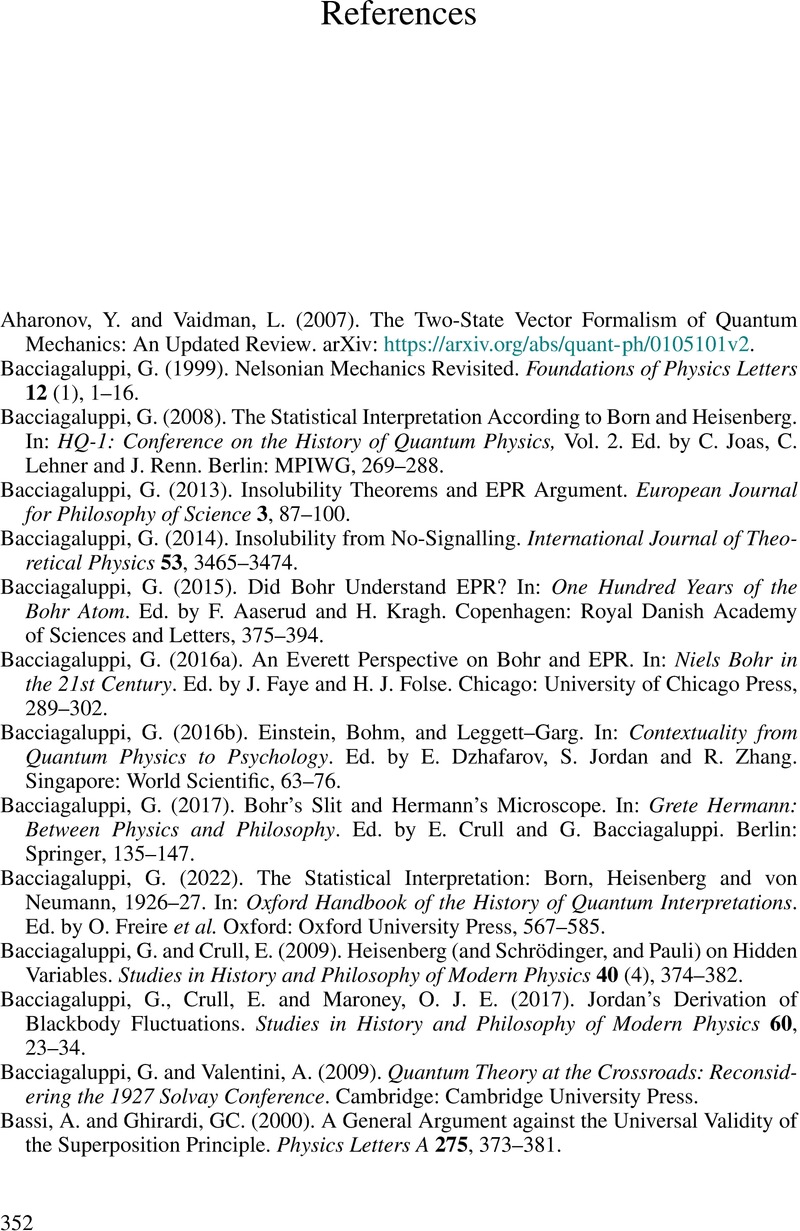Book contents
- Frontmatter
- Dedication
- Contents
- Preface
- Permissions and Copyright Notices
- Permissions and Copyright Notices
- Part I Main Contributions to the EPR Debate in 1935
- 1 Einstein on EPR
- 2 Others on EPR
- 3 Schrödinger on EPR
- 4 Heisenberg on EPR
- 5 Bohr on EPR
- Part II Selected Pre-EPR Papers
- 6 Knowledge of Past and Future in Quantum Mechanics
- 7 On the Indeterminacy Relation
- 8 Bohr.Einstein Example
- Part III Core EPR Papers
- 9 Can Quantum-Mechanical Description of Physical Reality be Considered Complete?
- 10 Discussion of Probability Relations Between Separated Systems
- 11 The Present Situation in Quantum Mechanics
- 12 Note on the Quantum-Mechanical Theory of Measurement
- 13 Remarks on Measurements in Quantum Theory
- 14 Is a Deterministic Completion of Quantum Mechanics Possible?
- 15 The Natural-Philosophical Foundations of Quantum Mechanics (Excerpt)
- 16 Can Quantum-Mechanical Description of Physical Reality be Considered Complete?
- Part IV Other Reactions to EPR
- 17 The Correlation of Wave Functions with the States of Physical Systems
- 18 States and Reality of Physical Systems
- 19 Quantum Mechanics as a Physical Theory
- 20 The Observation of Canonically Conjugates
- 21 Quantum Mechanics and Physical Reality
- 22 Is the Quantum-Mechanical Description of Physical Reality Complete?
- 23 Physical Reality and Quantum Mechanics
- 24 Quantum-Mechanical Description
- 25 Quantum Mechanics and Physical Reality
- Part V Correspondence
- 26 Correspondence on the ‘Einstein Paradox’
- Envoi
- References
- Index
- References
References
Published online by Cambridge University Press: 14 November 2024
- Frontmatter
- Dedication
- Contents
- Preface
- Permissions and Copyright Notices
- Permissions and Copyright Notices
- Part I Main Contributions to the EPR Debate in 1935
- 1 Einstein on EPR
- 2 Others on EPR
- 3 Schrödinger on EPR
- 4 Heisenberg on EPR
- 5 Bohr on EPR
- Part II Selected Pre-EPR Papers
- 6 Knowledge of Past and Future in Quantum Mechanics
- 7 On the Indeterminacy Relation
- 8 Bohr.Einstein Example
- Part III Core EPR Papers
- 9 Can Quantum-Mechanical Description of Physical Reality be Considered Complete?
- 10 Discussion of Probability Relations Between Separated Systems
- 11 The Present Situation in Quantum Mechanics
- 12 Note on the Quantum-Mechanical Theory of Measurement
- 13 Remarks on Measurements in Quantum Theory
- 14 Is a Deterministic Completion of Quantum Mechanics Possible?
- 15 The Natural-Philosophical Foundations of Quantum Mechanics (Excerpt)
- 16 Can Quantum-Mechanical Description of Physical Reality be Considered Complete?
- Part IV Other Reactions to EPR
- 17 The Correlation of Wave Functions with the States of Physical Systems
- 18 States and Reality of Physical Systems
- 19 Quantum Mechanics as a Physical Theory
- 20 The Observation of Canonically Conjugates
- 21 Quantum Mechanics and Physical Reality
- 22 Is the Quantum-Mechanical Description of Physical Reality Complete?
- 23 Physical Reality and Quantum Mechanics
- 24 Quantum-Mechanical Description
- 25 Quantum Mechanics and Physical Reality
- Part V Correspondence
- 26 Correspondence on the ‘Einstein Paradox’
- Envoi
- References
- Index
- References
Summary

Information
- Type
- Chapter
- Information
- The Einstein ParadoxThe Debate on Nonlocality and Incompleteness in 1935, pp. 352 - 364Publisher: Cambridge University PressPrint publication year: 2024
